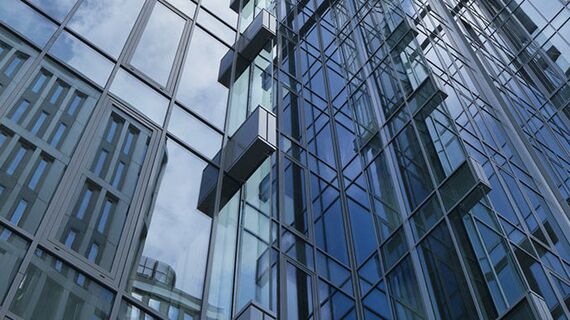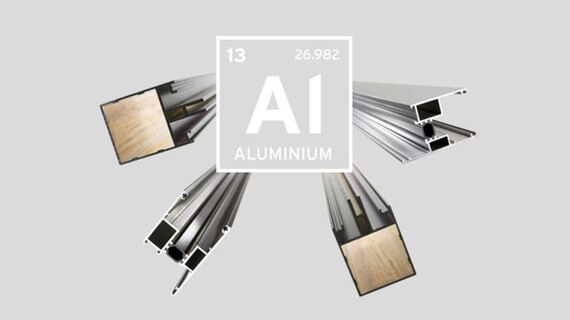The environmental impact of aluminium
A key element to produce aluminium is aluminium oxide. The Hall-Héroult process, an electrolytic process, is used to turn this aluminium oxide in primary aluminium. This has an impact on the environment. Fortunately, the environmental impact can be balanced out by the endless recyclability of aluminium and the energy efficiency during the long lifecycle of aluminium windows and doors.
The ore bauxite contains aluminium oxide. It is available in various tropical and subtropical regions. By surface mining, it is removed from the ground surface. Next step in the production of aluminium is to obtain the aluminium oxide out of the bauxite. Melting the aluminium oxide will release pure aluminium, which will be casted into ingots. This is what we call ‘primary aluminium’
Improving the carbon footprint from the start
The aluminium industry is constantly focused on improving the carbon footprint of the aluminium production. A big part of this carbon footprint is related to the need for electricity in the production process. This need for electricity is a one-off ‘investment’ to produce aluminium: this energy is now ‘embodied’ in the material. The aluminium used in Europe currently has an average of 8.6 kg CO2 per kg aluminium. By using "green electricity", the footprint can drop to 4 kg. This is what we call ‘low carbon primary aluminium’ . Most of the low carbon aluminium today is made by electricity from hydropower plants. New innovations ensure that the residual impact can decrease even further. Different manufacturing companies worldwide are working on new breakthrough techniques to further reduce the CO2 impact in aluminium production.
Endlessly recyclable
Aluminium is a strong, light and extremely durable material. And 100% recyclable. Unlike many other materials, aluminium does not lose its characteristics in the recycling process. That means you can recycle it endlessly without any loss in quality. Moreover, only 5% of the energy is needed for recycling: 8 tons of CO2 per kg is avoided each recycling cycle. The only limitation today is the availability of scrap material. Due to the long lifecycle of aluminium in many applications, the available aluminium scrap currently covers only 40 percent of the world demand. This percentage will definitely grow due to, amongst others, the worldwide renovation of buildings. Increasing the recycled content however will not affect the global environmental impact, as all available aluminium scrap is being recycled to the maximum.
Long lifecycle of aluminium windows and doors
Aluminium is extremely durable. It is not affected by UV rays or moisture and doesn’t corrode or rot. These are the main reasons why the material is used in buildings for a very long time. The lifecycle of aluminium windows and doors has an average of over 40 years, but lifecycles of over 60 years are no exceptions.
During these long lifecycles, our solutions contribute to the energy efficiency of the building. Our continuous focus on research and development results in energy-efficient solutions which can be used in low energy or even energy-neutral homes and buildings. They have excellent insulating and performing properties to reduce the environmental impact of new and existing buildings. Thanks to the high stability of aluminum frames, the large window surfaces allow for abundant solar gains, reducing the need for lighting and heating, and bringing comfort inside the buildings. And last but not least, the low maintenance of aluminium windows and doors avoids additional environmental impact during their lifecycle.
Our commitments
Improving the environmental impact is a priority of Reynaers Aluminium. We have clear commitment to sustainable aluminium and our solutions are designed to save energy during their use.
That means investing in:
- Energy efficient solutions.
- Durable solutions with low maintenance.
- Use of low carbon aluminium.
- End of life recycling of aluminium.
- Future improvements to reduce the carbon footprint of aluminium.
This is our commitment to a greener world for ourselves and the future generation. Reynaers Aluminium is an active member of European Aluminium. This organization is strongly committed to improving the impact. They published their vision 2050 with clear objectives.



